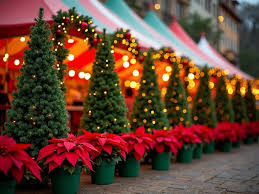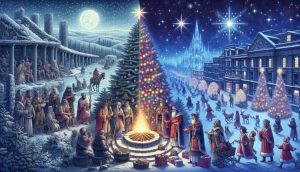
Christmas, celebrated by millions worldwide, has an intriguing history that stretches back far before the birth of Christ. What we now recognize as a joyous occasion filled with gifts, lights, and festive cheer has evolved over centuries, blending religious significance with cultural traditions. In this blog, we explore how Christmas transformed from ancient pagan festivals to the modern holiday we know today.
Top career counseling for students in North Delhi: Rohini, Pitampura, and Shalimar Bagh
The Pagan Roots of Christmas
Before Christmas became a Christian celebration, December was a time for various pagan festivals. The Roman festival of Saturnalia, dedicated to the god Saturn, was a week-long event filled with feasting, gift-giving, and merrymaking. Similarly, the Winter Solstice, celebrated by many ancient cultures, marked the shortest day of the year and symbolized the return of the sun. These festivals honored nature, light, and renewal, laying the foundation for many Christmas traditions.
The Norse celebrated Yule around the same time. Yule logs were burned to symbolize the rebirth of the sun, and evergreen trees were decorated as a reminder of life during winter. These customs, deeply rooted in pagan beliefs, later influenced how Christmas was celebrated.

The Birth of Christmas as a Christian Holiday
The transition of Christmas into a Christian holiday began in AD 336, when the Roman Emperor Constantine declared December 25 as the date to celebrate the birth of Jesus Christ. This date was likely chosen to align with existing pagan festivals, making it easier for early Christians to adopt and integrate their faith.
Best career counseling services in South Delhi: Hauz Khas, Saket, and Greater Kailash
In AD 529, Christmas was officially recognized as a public holiday by Emperor Justinian. Over time, it became a significant day in the Christian calendar, emphasizing the nativity story and the themes of hope, joy, and salvation.

Christmas in the Middle Ages
During the Middle Ages, Christmas celebrations varied widely across regions. Feasting, music, and religious ceremonies were central to the festivities. However, the Puritans of the 17th century, particularly in England and colonial America, viewed Christmas as too extravagant and even banned its celebration in some areas. Despite these efforts, the holiday’s popularity endured, especially among the common people who cherished its communal and joyous spirit.
The Victorian Era: Christmas Reimagined
The Victorian era marked a turning point in how Christmas was celebrated. Queen Victoria and Prince Albert popularized many traditions that are now synonymous with the holiday. For instance, the Christmas tree, a German custom brought by Albert, became a centerpiece in households.
This era also saw the rise of Christmas cards, introduced in 1843, and the publication of Charles Dickens’ iconic novella, “A Christmas Carol.” The story emphasized generosity, compassion, and goodwill, shaping the moral undertones of the modern Christmas spirit.
The Birth of Santa Claus
One of the most recognizable figures of Christmas, Santa Claus, has origins in the Dutch legend of Sinterklaas, based on Saint Nicholas, a 4th-century bishop known for his generosity. When Dutch settlers brought the tradition to America, it evolved into the jolly figure we know today, thanks to Clement Clarke Moore’s poem, “A Visit from St. Nicholas” (1823), and later, Coca-Cola advertisements that standardized his red suit and cheerful demeanor.
Modern Christmas Celebrations
Today, Christmas is celebrated as both a religious and secular holiday. While Christians honor the birth of Jesus with church services and nativity plays, others embrace the cultural aspects—exchanging gifts, decorating homes, and enjoying festive meals.
Globalization has made Christmas a universal celebration, with countries adding their unique touch. For example, in Japan, Christmas Eve is often celebrated with a special meal of fried chicken, while in Mexico, Las Posadas reenacts Mary and Joseph’s search for shelter.
Best career counseling services in East Delhi: Laxmi Nagar, Preet Vihar, and Mayur Vihar.
The Essence of Christmas
Despite its varied origins and transformations, Christmas retains its core themes: love, generosity, and togetherness. Whether through religious observance or festive cheer, the holiday brings people together to reflect on what truly matters.
As you celebrate this season, take a moment to appreciate the rich history behind the traditions you cherish. From pagan festivals to modern lights, Christmas’s evolution is a testament to humanity’s enduring spirit of celebration.

